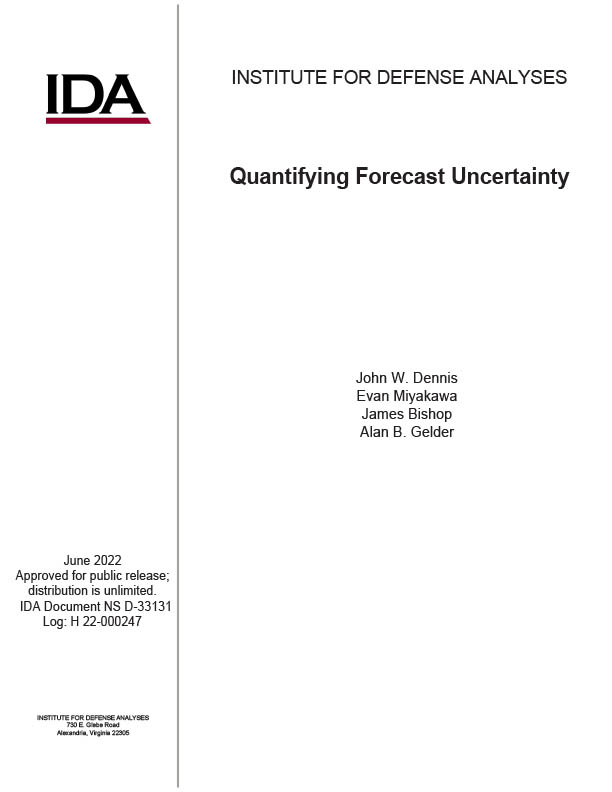Quantifying Forecast Uncertainty
June, 2022
IDA document: D-33131
FFRDC: Systems and Analyses Center
Type: Documents
Division: Strategy, Forces and Resources Division
Authors:
IDA document: D-33131
FFRDC: Systems and Analyses Center
Type: Documents
Division: Strategy, Forces and Resources Division
Authors:
Authors
John W. Dennis, Evan T. Miyakawa, James M. Bishop, Alan B. Gelder
See more authors

